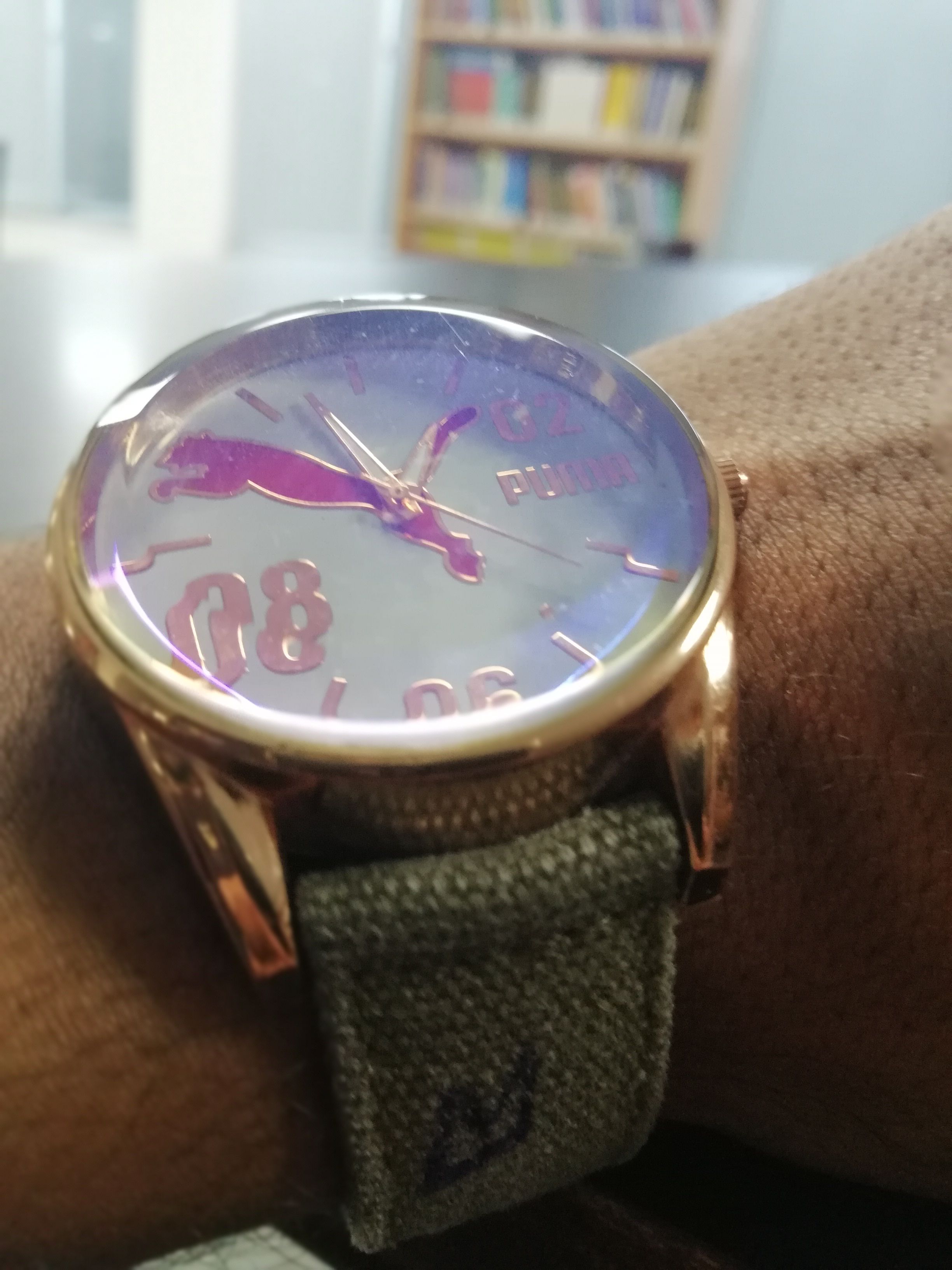wrist watch

The watch which developed from the 16th century to the mid 20th century was a mechanical device, powered by winding a mainspring which turned gears and then moved the hands, and kept time with a rotating balance wheel. The invention of the quartz watch in the 1960s, which ran on electricity and kept time with a vibrating quartz crystal, proved a radical departure for the industry. During the 1980s quartz watches took over the market from mechanical watches, an event referred to as the "quartz crisis". Although mechanical watches still sell at the high end of the market, the vast majority of watches now have quartz movements.
One account of the origin of the word "watch" is that it came from the Old English word woecce which meant "watchman", because it was used by town watchmen to keep track of their shifts. Another says that the term came from 17th century sailors, who used the new mechanisms to time the length of their shipboard watches (duty shifts).
The first timepieces to be worn, made in the 16th century beginning in the German cities of Nuremberg and Augsburg, were transitional in size between clocks and watches. These 'clock-watches' were fastened to clothing or worn on a chain around the neck. They were heavy drum-shaped cylindrical brass boxes several inches in diameter, engraved and ornamented. They had only an hour hand. The face was not covered with glass, but usually had a hinged brass cover, often decoratively pierced with grillwork so the time could be read without opening. The movement was made of iron or steel and held together with tapered pins and wedges, until screws began to be used after 1550. Many of the movements included striking or alarm mechanisms. They usually had to be wound twice a day. The shape later evolved into a rounded form; these were later called Nuremberg eggs. Still later in the century there was a trend for unusually-shaped watches, and clock-watches shaped like books, animals, fruit, stars, flowers, insects, crosses, and even skulls (Death's head watches) were made.
These early clock-watches were not worn to tell the time. The accuracy of their verge and foliot movements was so poor, with errors of perhaps several hours per day, that they were practically useless. They were made as jewelry and novelties for the nobility, valued for their fine ornamentation, unusual shape, or intriguing mechanism, and accurate timekeeping was of very minor importance.